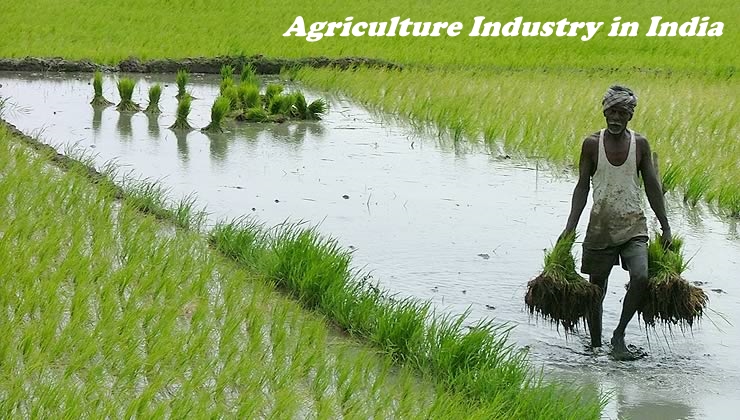
Management Education in India - MBA | Management Studies
India Education

Structure of management education in India is divided into major divisions as outlined below:
- Institutions of national importance
- University departments
- Colleges affiliated to the universities
- Non University Autonomous Institutions
- Distance/Correspondence based Institutions
- Unaffiliated Institutions
At the top are the reputed Institutes of national importance institutes like IIMs and some university departments such as FMS which have maintained the high quality in their teaching and research of management education. The second ring institutes are those started by industrial houses, private institutes and state level educational institutes like MICA, Symbiosis and so on, which offer quality management education at par with these reputed institutes. These come under the category of “Non University Autonomous Institutions”. The third level management Institutes in India are the University departments and other Open Universities which are providing management education through correspondence, distance and part-time.
Also read: Top 100 B-Schools in India
In India all educational institutes, those who are providing management education are certified by the All India Council of Technical Education (AICTE). In India management study and training come with a variety of names –
- Master of Business Administration (MBA)
- Master of Management Studies (MMS)
- Master in Finance Control (MFC)
- PG. Diploma in Business Management
- Postgraduate Program in Public Management & Policy (PGP-PMP)
- Master of Public Administration (MPA)
- PG. Diploma in Management (PGDIM)
- PG. Diploma in Human Resource Management (PGDHRM)
- PG. Diploma in Financial Management (PGDFM)
- PG. Diploma in Operations Management (PGDOM)
- PG. Diploma in Marketing Management (PGDMM)
During the course, there are prospects of internship from campus providing a glimpse into the operation of an organization. There is ample scope for role-play and other simulations to develop skills in relevant areas. This type of program forms the basis for mutually supportive networks throughout your career. You may have the facility of a placement cell which co-ordinates opportunities to interview for potential employers.
The fee structure of the management programs in India varies from programs to programs. Full time courses from the most reputed institutions are usually expensive, ranging from Rs. 50,000 to Rs. 4 lakh per annum, approximately. Usually, the 2 year management programs can be taken up after successful completion of graduate studies in any discipline.
Graduates with a minimum of 45 percent to 50 percent marks are eligible to apply for admission to management programs. Aspirants have to go through a selection process which includes entrance/admission tests, followed by group discussion and the interview of candidates declared successful in the written test. The aim of the test is to evaluate, under stress, a candidate’s general verbal, mathematical and analytical abilities.
The management entrance test in India call for a superior command over the English language, quantitative skills and a sharp mind.
In India a chain of institutions numbering more than 200 universities offering management courses both at the First Degree and Advanced levels has been started. The courses offered at the various institutions to date cover training at the Master’s Degree level for the M.B.A. degree. Master of Business Administration is normally considered to be the basic and ideal post-graduate qualification for taking up a good and rewarding career in management. As per one estimate, every year about 10,000 MBAs are churned out by Indian Institutes of Management (IIMs) and a host of other universities and recognized institutes/deemed universities. A candidate with a good MBA degree finds no problem in getting a good job and freshers are usually inducted as Management Trainees for one to two years, before getting absorbed in regular scales. After a few years of experience, MBAs may choose the job of their own liking at very attractive terms.
Several institutes/universities also offer post-graduate diplomas of one to two-year duration on
- Business Management
- Marketing Management
- Human Resource Development Management
- Personnel Management and Labor Welfare
- Basic Finance
- Financial Management
- Materials Management
- Operations Management
But as a matter of rule, MBA degree is considered to be ideal by the job-seekers as well as the employers. Diplomas also assist in finding good openings, provided these are supplemented with some relevant experience.
Important Management Services in India
India’s Competitive Advantage: Why India needs Management skills?
- India and the Indians have undergone a paradigm shift. There have been fundamental and irreversible changes in the economy, government policies, outlook of business and industry, and in the mindset of the Indians in general.
- From a shortage economy of food and foreign exchange, India has now become a surplus one.
- From an agro-based economy, India has emerged as a service oriented one.
- From the low-growth of the past, the economy has become a high-growth one in the long-term.
- Having been an aid recipient, India is now joining the aid givers club.
- Although India was late and slow in modernization of industry in general in the past, it is now a front-runner in the emerging Knowledge based New Economy.
- The Government is continuing its reform and liberalization not out of compulsion but out of conviction.
- Indian companies are no longer afraid of Multinational Companies. They have become globally competitive and many of them have become MNCs themselves.
- Fatalism and contentment of the Indian mindset have given way to optimism and ambition.
- Introvert and defensive approach have been replaced by outward-looking and confident attitude.
- In place of denial and sacrifice, the Indian value system has started recognizing seeking of satisfaction and happiness.
- The Indian culture, which looked down upon wealth as a sin and believed in simple living and high thinking, has started recognizing prosperity and success as acceptable and necessary goals.
- Indian management graduates no longer queue up for safe government jobs. They prefer and enjoy the challenges and risks of becoming entrepreneurs and global players in the emerging private sectors.
Stable country and institutions
- India being a largest democracy with stable, mature, vibrant and exemplary democratic governance and institutions, boasts lots of quality B-Schools attracting intellect student community in large number every year.
- Possess strong and transparent legal and accounting system.
- Numerous watchful and proactive NGOs.
- Free, vocal, alert and quality media. 5600 dailies with a combined circulation of 60 million, nearly 15000 weeklies and 20000 periodicals in 21 regional languages.
- Legal protection for intellectual property rights.

Consumer Market
- Large and growing market of 1 billion people out of which 300 million are middle class consumers.
- India offers a vibrant market of youth and vigor with 54% of population below 25 years of age. These young people will work harder, earn more and demand more from the market and thereby sustaining growth in the long-term.
- Every month, there is an addition of one million cell phone subscribers. By December 2005, the total number is expected to reach 100 million. The domestic demand is expected to double over the ten-year period from 1998 to 2007. The number of households with “high income” is expected to increase by 60% in the next four years to 44 million households.

Consumer Market
- India is a fastest growing economy that the developed nations always looking the country as a best global market to market the products. The fundamentals of the Indian economy have become strong and sustainable. The macro-economic indicators are at present the best in the history of independent India with high growth, foreign exchange reserves, and foreign investment and robust increase in exports and low inflation and interest rates.
- India is the second fastest growing economy of the world at present.
- A unique feature of the transition of the Indian economy has been high growth with stability. The Indian economy has proved its strength and resilience when there have been crises in other parts of the world including Asia in recent years.
- The foreign exchange reserves have reached a record level of US$ 100 billion as on 22nd December 2003. India is the sixth largest foreign exchange holder in the world. This is remarkable considering the fact that the Forex reserves went under US$ one billion in 1991 before the economic reforms started. This comfortable situation has facilitated further relaxation of foreign exchange restrictions and a gradual move towards greater capital account convertibility.
- The interest rate continues to be reduced and is around 6%. This is the lowest in the last thirty years and this is stimulating consumption and investment.

Agriculture
- One of the world’s largest food producers (600 million tones).
- World’s largest producer of milk, sugarcane and tea.
- Second largest exporter of rice, wheat, fruits, and vegetables. India produces 30 million tones of fruits and 59 million tones of vegetables.
Industry
- Diversified and large industrial base, which is becoming globally competitive. Examples, Tata Steel and NALCO are the lowest cost manufacturers of steel and aluminium in the world. Moser Baer is one of the top three manufacturers of CD Roms in the world. Bharat Forge is one of the leading suppliers to auto giants, such as Ford, General Motors, and Toyota.
- India’s Hero Honda is the world’s largest motorcycle manufacturer with 2002 production of 1.7 million units.
- The Indian companies have drawn up ambitious plans for expanding and diversifying their manufacturing activities with about 12 billion dollars in the next three years. Most of the companies have been able to generate the funds from their own operations. The areas whose output is being scaled up are automobiles, auto parts, metals, chemicals, pharmaceuticals and electronics.
- Some of the Indian companies have gone global with presence in 60 countries, including USA, Europe and China. India is one of the top ten producers of bulk drugs in the world and 60% of India’s bulk drugs production is exported. India has the highest number of annual bulk drugs filings (77) with USFDA. India is home to the largest number of pharma plants (61) approved by USFDA outside US.
- The chemical industry is becoming competitive and has very high growth potential for production for local market as well as exports. Bayer AG, the German chemical and pharmaceutical company has identified India as the outsourcing hub for basic and specialty chemicals.
- There are 150 biotechnology companies whose business is growing exponentially.
- The auto parts industry has emerged as one of the country’s fastest-growing manufacturing sectors; this is expected to reach US$ 8 billion in 2006. ‘Bharat Forge’ of India is the world’s largest manufacturer of front axles for trucks. India has emerged as an outsourcing center for auto parts. Visteon and Delphi, the world’s largest component manufacturers have entered India for production. Toyota is opening a transmission parts unit in India. Volvo and GM have set up purchasing offices. A rising share of Indian auto parts exports goes to original equipment manufacturers (OEMs).
- India is the second largest cement producer in the world with 110 million tons.
- India is the world’s premier center for diamond cutting and polishing. Nine out of every 10 stones old in the world pass through India.
- India has a large entertainment industry, which produces more than 1,000 movies per year overshadowing Hollywood.
Related Links
Latest News
People Reading Now

CBSE Compartment Result 2023 OUT: Click For Direct Link



CSAB 2023: Special Round Registration Begins Today


